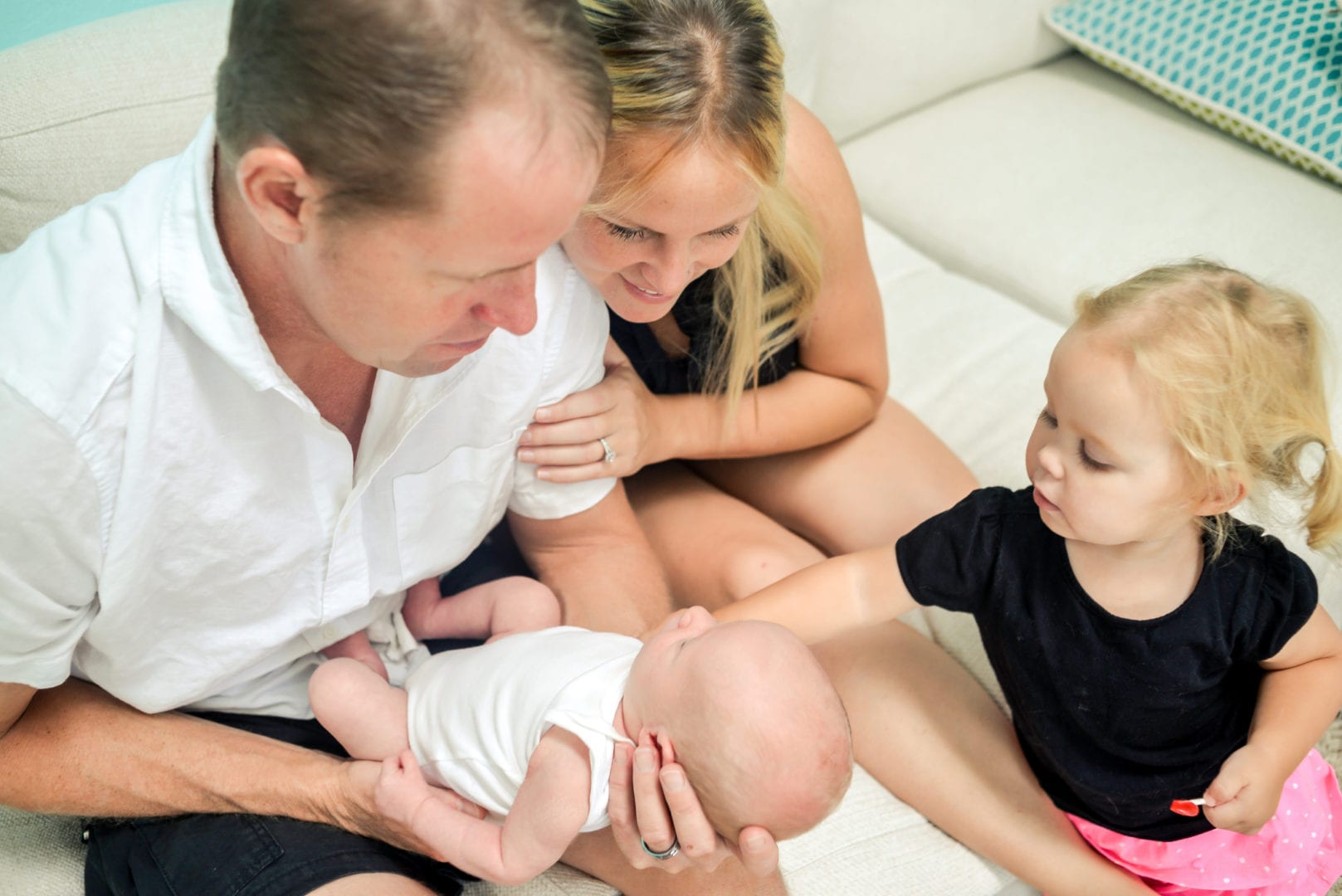Since the day he or she arrived, your firstborn child has been the center of your world. It makes sense, then, that adding a new baby to the mix won’t be the easiest of transitions. When my husband and I made the decision to start trying for a second baby, we spent considerable time deciding if we were ready. Now that the second one is on its way, I worry how our family will adjust and feel particularly concerned with how it may be hard on our firstborn.
My concern is not unfounded: According to one study published in the Journal of Marriage and the Family, most firstborn children will experience the transition to siblinghood as toddlers — between the ages of 2 and 3, a period considered significant for a young child’s social and emotional development. After the birth of a sibling, these researchers found an immediate negative impact to the firstborn child’s verbal development, as well as negative effects on achievement and on socio-emotional adjustment for the next two and a half years.
The good news: The changes are temporary, researchers promised — and there are ways to mitigate the disruption. The team hypothesized that the effects of sibling birth can be mediated by “positive changes” to the family environment, including “compensatory interactions” with family members.
To better understand exactly what this means, I spoke to parenting experts, including moms of two or more. Below you’ll find their tips on how to ease a second child into the life of an only child.
1. Make other major changes as far in advance as possible
According to Dr. Arielle Ornstein, a pediatrician with the Northeast Medical Group Pediatrics in Rye Brook, New York, getting any other major transitions out of the way is an important way a caregiver can prepare a child for a new sibling.
If it still needs to happen, move him from your bedroom and into his own space. Shore up child care. Potty train, if you can.
Before the arrival of baby No. 2, New York City mom Linnea Covington says she potty trained her 2-year-old so she wouldn’t have two kids in diapers.
“And I moved him into a toddler bed, so he knew the crib was for his little brother,” Covington says.
2. Talk about it as a family
Your little one may not know many words. Still, don’t underestimate what he or she understands. According to Kate Rope, author of “Strong as a Mother: How to Stay Healthy, Happy, and (Most Importantly) Sane from Pregnancy to Parenthood,” they’re never too young to be a part of conversations about what’s affecting their lives.
“Books are an easy way to have important conversations with kids, particularly young ones,” Rope says.
“My son loves books, so I probably went overboard,” says San Francisco mom Elizabeth Xu. “We started reading them pretty early, when I was about five months pregnant. Many of the books skewed older (my son was 23 months when his little sister was born), but I still think they helped.”
3. Lean on your partner
Naomi Lindt, a mom from Asheville, North Carolina, says that prior to the birth of her second child, she was always parent No. 1, despite her husband’s best efforts. The birth of Baby No. 2 provided an opportunity for their firstborn to bond with his dad.
“But it was tough on all of us,” Lindt says. “Looking back on it, I had prioritized special mom-and-son time before the baby came, but I wish I had done the opposite.”
Her suggestion: “Carve out special dad-and-son time before the baby [comes] to enable their bond to grow (and lord knows a pregnant mom needs her down time!), and anticipate more special bonding time with dad after the baby comes.”
4. Let your older child be in charge
Little ones want to feel involved and in charge. So, let them feel this way!
After the baby’s arrival, Rope recommends arranging for someone to bring your older child to the hospital. Reunite with your firstborn without the new baby on your lap, she says. If possible, ask a nurse, grandparent or friend to hold the baby when your older child arrives, so you can have a quiet moment together before introducing him to the new baby.
After this, Rope suggests presenting the older child with a gift “from” the new baby.
“Our new baby gifted a cool construction set to his older brother, which my older son loved at the time,” says Austin, Texas, mom Suzanne Brown.
5. Prioritize your firstborn’s needs
The first few months after the baby’s arrival, experts recommend promoting a positive sibling relationship by prioritizing your firstborn’s needs. To make up for the loss of mom’s attention, have an “activity bag” or toy chest filled with special toys your older child only gets to play with when you need to attend to baby No. 2.
And remember, sometimes your newborn will have to wait just a few minutes.
Ramsey Hootman, a mom from San Francisco, passes along this bit of wisdom she once heard, which she says she’s found to be true: “The baby has never known a life without a sibling, and crying for 20 seconds longer while you meet your firstborn’s needs is not going to hurt anyone.”
6. Be prepared to have two babies again
No matter what you do, everyone agrees: Expect some regressions. Your potty-trained toddler may start having accidents, for example, or a formerly independent sleeper may need more help settling at night.
“Don’t just expect it — but allow it,” Rope says.
After the birth of her second child, Rope says she offered her firstborn “baby time” whenever she needed it. Rope describes this as a daily chance for your firstborn to cuddle on mom’s lap and enjoy the focus of all your attention.
The bottom line
It’s a major change for everyone. Cut yourself some slack.
Claire Zulkey, a mom from Evanston, Illinois, reminds us: “There is nothing you can do that won’t make your kid probably act out a little bit, for totally understandable reasons. Not saying it doesn’t stink when it happens, but don’t beat yourself up for not doing the ‘right’ thing to prepare if your first still gets testy.”
Read next: Common parenting styles, with a modern twist





